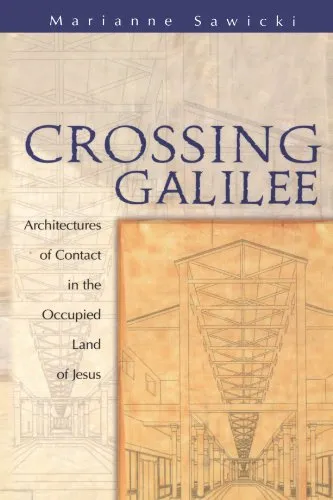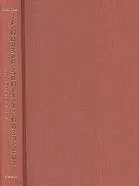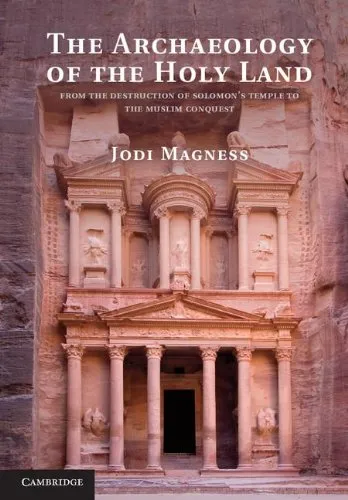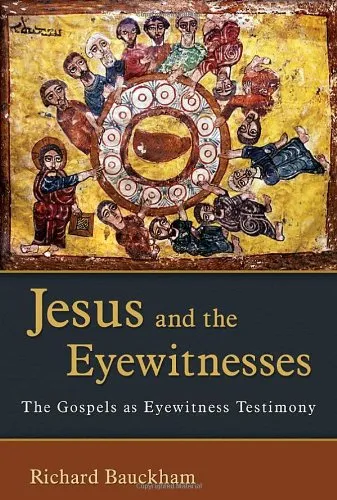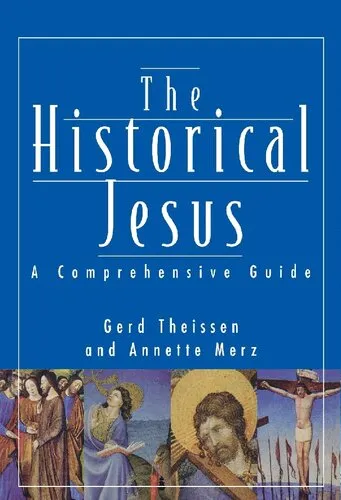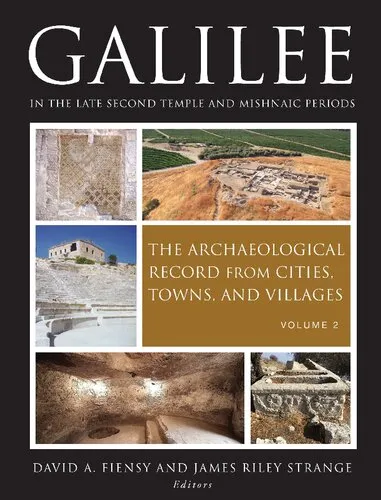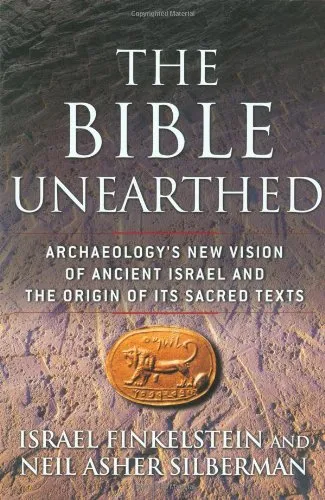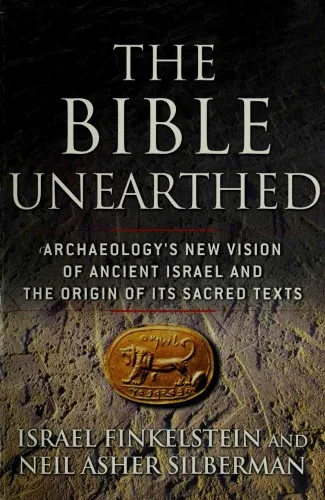Crossing Galilee: Architectures of Contact in the Occupied Land of Jesus
4.0
بر اساس نظر کاربران

شما میتونید سوالاتتون در باره کتاب رو از هوش مصنوعیش بعد از ورود بپرسید
هر دانلود یا پرسش از هوش مصنوعی 2 امتیاز لازم دارد، برای بدست آوردن امتیاز رایگان، به صفحه ی راهنمای امتیازات سر بزنید و یک سری کار ارزشمند انجام بدینکتاب های مرتبط:
Persian Summary
معرفی کتاب
کتاب "Crossing Galilee: Architectures of Contact in the Occupied Land of Jesus" توسط ماریان ساویکی نوشته شده است و به بررسی تعاملات معماری و فرهنگی در سرزمینهای اشغالی جلیل در دوران زندگی و اعمال عیسی میپردازد.
خلاصهای جامع از کتاب
در این کتاب، ماریان ساویکی با بهرهگیری از مطالعات تاریخی، باستانشناسی و فرهنگی، به تحلیل و بررسی نقش معماری و ساختارهای اجتماعی در ایجاد و تقویت تعاملات فرهنگی در جلیل میپردازد. نویسنده به نحوی باریکبینانه نشان میدهد که چگونه محیط فیزیکی و ساختمانها به عنوان نقطه تماس بین فرهنگها و ادیان متفاوت عمل کردهاند.
این کتاب به زندگی اجتماعی و دینی در جلیل نگاهی عمیقتر میاندازد و چگونگی تأثیر معماری در ایجاد تبادلات فرهنگی را بررسی میکند. از دیگر موضوعات مهم این کتاب، تأثیر وضعیت اشغال در زندگی روزمره مردم و چگونگی بازتاب آن در تعاملات جمعی است.
نکات کلیدی
- تحلیل نقش معماری به عنوان مسیری برای تبادلات فرهنگی.
- بررسی چگونگی همزیستی و تعامل ادیان و فرهنگهای مختلف در یک فضای اشغالی.
- تأثیرات وضعیتهایی مانند اشغال بر همبستگی اجتماعی.
- تبیین ارتباطات محلی و جهانی در محیطهای تاریخی.
جملات مشهور کتاب
"معماری نه تنها شکل میگیرد، بلکه شکلدهنده نیز هست؛ و در این فرآیند، همبستگیها و تقابلها به گونهای نمادین تجسم مییابند."
"درگیریها و تعاملات به وضوح در محیطهای ساخته شده به تصویر کشیده میشوند، جایی که سنگها بهعنوان شاهدی بیصدا از تاریخ پرنوسان عمل میکنند."
چرا این کتاب مهم است
این کتاب به دلیل ماهیت بینرشتهای آن، چشماندازی ابتکاری و جدید به پژوهشهای تاریخی ارائه میکند. با تمرکز بر تأثیرات متقابل معماری و روابط اجتماعی، کتاب "Crossing Galilee" به درک بهتر از تعاملات فرهنگی-دینی در محیطهای پیچیده و در دوران حساس تاریخی کمک میکند.
همچنین، این کتاب برای پژوهشگران و علاقهمندان به مطالعات دینی، تاریخی و فرهنگی الهامبخش است و به آنها ابزارهای جدیدی برای تحلیل رابطههای اجتماعی در محیطهای تحت تأثیر قرارگرفته میدهد.
Introduction to "Crossing Galilee: Architectures of Contact in the Occupied Land of Jesus"
"Crossing Galilee: Architectures of Contact in the Occupied Land of Jesus" by Marianne Sawicki is an engaging exploration of the historical and theological landscape of Galilee during Jesus's time. As readers, we are invited to delve into the rich interactions that occurred within this region and explore the ways these encounters shaped religious and cultural identities. The book serves as an intellectual journey that reconstructs the socio-political and geographical intricacies of an historical era pivotal to Christian history.
Detailed Summary of the Book
Marianne Sawicki's "Crossing Galilee" is more than a historical examination; it is an innovative reconstruction of how ancient Galilean society operated, especially through its specific architectural and topographical features. Sawicki argues that these physical markers were not simply passive backdrops but active components that influenced human contact and facilitated or hindered relationships across diverse communities.
The book separates itself into various chapters, each focusing on a different facet of Galilean life. Topics range from the role of synagogues and marketplaces to the significance of roads and rural spaces. Sawicki uses an interdisciplinary approach, drawing from archaeology, anthropology, history, and biblical studies, to illuminate her points. With vivid descriptions and a narrative style, she places the reader directly in the historical setting.
The crux of "Crossing Galilee" is the exploration of the occupation dynamics and the daily lives of those living under Roman rule. As she reconstructs these environments, Sawicki contemplates how they created opportunities or limitations for the ministry of Jesus and his followers, providing a fresh outlook on the historical Jesus and his impact on the socio-political texture of the region.
Key Takeaways
- The landscape of Galilee was as influential as the political dynamics in shaping the encounters and relationships of its inhabitants.
- Architectural structures like homes, marketplaces, and religious sites had distinct roles in facilitating interactions.
- Jesus's ministry must be understood within the complex socio-political and geographical contexts that Sawicki so vividly paints.
- The book challenges readers to rethink how environments act as agents of change in societal structures.
Famous Quotes from the Book
"In every corner of Galilee's varied landscapes, we see the silent witnesses of history, the architectures standing firm amidst time’s erosion, testaments to the forgotten dialogues etched into the stones."
"Contact is not merely meeting; it is a crossing into another's world, a genuine engagement where boundaries dissolve and understanding grows."
Why This Book Matters
"Crossing Galilee" holds significance for those interested in historical theology, architecture, and the socio-political contexts of biblical stories. It offers novel insights into how Jesus's teachings and actions were received and perceived within their original context. By reconstructing the landscapes and the personal lives of ancient Galileans, Sawicki provides critical perspectives on how geography and contact zones operate as forces in historical change.
The book stands as a bridge for interfaith dialogue because it contextualizes Christian narratives in a way that appreciates the multicultural and multi-religious tapestry of the region. It invites readers not only to visualize past architectures but also to consider the structural dynamics affecting current global and local conflicts.
دانلود رایگان مستقیم
You Can Download this book after Login
دسترسی به کتابها از طریق پلتفرمهای قانونی و کتابخانههای عمومی نه تنها از حقوق نویسندگان و ناشران حمایت میکند، بلکه به پایداری فرهنگ کتابخوانی نیز کمک میرساند. پیش از دانلود، لحظهای به بررسی این گزینهها فکر کنید.
این کتاب رو در پلتفرم های دیگه ببینید
WorldCat به شما کمک میکنه تا کتاب ها رو در کتابخانه های سراسر دنیا پیدا کنید
امتیازها، نظرات تخصصی و صحبت ها درباره کتاب را در Goodreads ببینید
کتابهای کمیاب یا دست دوم را در AbeBooks پیدا کنید و بخرید
1399
بازدید4.0
امتیاز50
نظر98%
رضایتنظرات:
4.0
بر اساس 0 نظر کاربران
"کیفیت چاپ عالی بود، خیلی راضیام"
